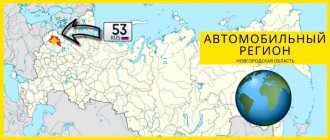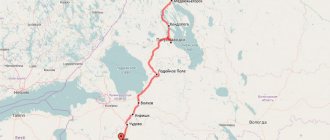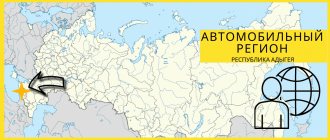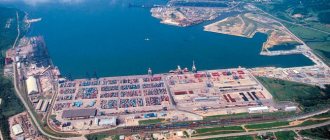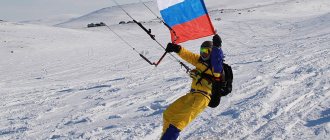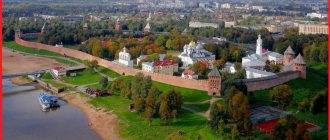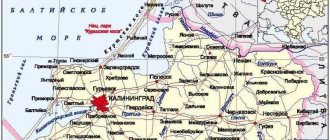The Novgorod region is a subject of the Russian Federation, part of the Northwestern Federal District. It borders on the Pskov region in the west and southwest, on the Tver region in the south and southeast, on the Leningrad region in the north and northwest, and on the Vologda region in the northeast.
| Settlements | Population (persons) |
| Velikiy Novgorod | 222 868 |
| Borovichi | 50 896 |
| Staraya Russa | 29 019 |
| Pestovo | 15 461 |
| Valdai | 14 379 |
What holiday is it today?
February 10, 2022, Thursday
Today are holidays, events: Diplomat's Day Tomorrow: World Sick Day Discovery of insulin
Today is the Orthodox holiday: St. Ephraim the Syrian. Venerable Ephraim of Novotorzhsky. Venerable Ephraim of Pechersk, Bishop of Pereyaslavl. Venerable Theodosius of Totem, Spasosumorin of the monastery, leader and founder... Tomorrow: Transfer of the relics of the holy martyr Ignatius the God-Bearer. Saints Gerasim, Pitirim, Jonah, bishops of Great Perm, Ustva...
Today is a national holiday: Ephraim's Day... Tomorrow: Lawrence's Day
Population dynamics
| Population | ||||||||||
| 1897[3] | 1926[4] | 1959[5] | 1970[6] | 1979[7] | 1987[8] | 1989[9] | 1990[10] | 1991[10] | 1992[10] | 1993[10] |
| 1 367 022 | ↘1 050 604 | ↘736 529 | ↘721 471 | ↗721 790 | ↗752 000 | ↗753 054 | ↗753 369 | ↘751 908 | ↘748 820 | ↘746 950 |
| 1994[10] | 1995[10] | 1996[10] | 1997[10] | 1998[10] | 1999[10] | 2000[10] | 2001[10] | 2002[11] | 2003[10] | 2004[10] |
| ↘742 100 | ↘739 368 | ↘735 557 | ↘731 464 | ↘729 747 | ↘726 027 | ↘718 565 | ↘710 261 | ↘694 355 | ↘692 138 | ↘682 628 |
| 2005[10] | 2006[10] | 2007[10] | 2008[10] | 2009[10] | 2010[12] | 2011[10] | 2012[13] | 2013[14] | 2014[15] | 2015[16] |
| ↘674 071 | ↘665 365 | ↘657 595 | ↘652 437 | ↘645 986 | ↘634 111 | ↘632 799 | ↘629 748 | ↘625 855 | ↘622 430 | ↘618 703 |
| 2016[17] | 2017[18] | 2018[19] | 2019[20] | 2020[2] | 2021[21] | 2022[1] | ||||
| ↘615 692 | ↘612 522 | ↘606 476 | ↘600 296 | ↘596 508 | ↘592 415 | ↘585 247 | ||||
Seasons
Seasons, four periods of the year (spring, summer, autumn and winter) characterized by certain average temperatures. The period during which the Sun passes through one of these sectors is called the season. Spring in the Northern Hemisphere and autumn in the Southern Hemisphere begin when the Sun passes through the initial circle of declination and its right ascension is 0° (vernal equinox). Summer in the Northern Hemisphere and winter in the Southern Hemisphere occur when the sun's right ascension is 90° (summer solstice). Autumn in the Northern Hemisphere and spring in the Southern Hemisphere begin when the sun's right ascension is 180° (autumnal equinox). The beginning of winter in the Northern Hemisphere and summer in the Southern Hemisphere is considered to be the winter solstice, when the direct ascension of the Sun is 270°... Next: Seasons. Russian folk calendar. Monthly words...
Folk calendar about every day
Every day one season always replaces another and this determines a person’s way of life. In connection with this, a folk calendar was formed in which there were practically no nameless, unmarked days. Every day was special, had its own purpose. All this was determined by climate conditions and astrological phenomena.
A calendar is a system for counting periods of time. The first calendars arose a long time ago, in ancient times, because there was a need to measure time. The word calendar comes from the Latin words caleo - to proclaim and calendarium - debt book. This is due to the fact that in Ancient Rome the beginning of each month was especially proclaimed, and because it was customary to pay debts on the first day of the month. Different peoples counted time differently. Some calendars are based on the changing phases of the moon - lunar calendars; in others - the change of seasons - sunny; in others, the length of the year was coordinated with the change of seasons, and the counting of months was associated with the phases of the Moon. Such calendars are called lunisolar.
In Rus', the calendar was called a monthly calendar. Every day, the month book covered the entire year of peasant life, “describing” day by day, month after month, where each day had its own holidays or weekdays, customs and superstitions, traditions and rituals, natural signs and phenomena. The cyclical nature of the calendar is reminiscent of human life, where spring is youth, summer is heyday, autumn is the time of harvesting fruits (it’s good if there are some, otherwise you can live your life without collecting fruits), winter is the time of wisdom and peace. This cyclicality and rhythm determined the way of life of the farmer. The folk calendar was an agricultural calendar, which was reflected in the names of the months, folk signs, rituals and customs. Even the determination of the timing and duration of the seasons is associated with real climatic conditions. Hence the discrepancy between the names of the months in different areas... Next: Folk calendar...
Cities and villages
Velikiy Novgorod
In the legends of the Scandinavians, Novgorod is found under the name Holmgard, which means “a city that goes under water during floods.” It’s not surprising, because there are many bodies of water around. One river divides the city into 2 parts. Previously, these halves fought with each other.
According to legend, Perun is involved in the feud, whose statue the merchants threw into the Volkhov. He swam to the bridge and threw a stick at it with the words: “Here is a souvenir from me, Novgorodians.” After this, regular massacres took place on the bridge.
- Rurik settlement. It is believed that the city was originally located here. But, according to archaeological excavations, it became impossible to continue development, so a new fortress was founded. It was this event that determined the name of the settlement: the new city - Novgorod.
- Novgorod Detinets is one of the oldest surviving kremlins in our country. It was the first in Rus' to be built of red brick. It was here that the trend for battlements began.
- Saint Sophia Cathedral. The western gate of the temple comes from Sweden. In the 12th century they were brought as a trophy, which turned out to be so valuable that 500 years later the Swedes tried to return it. From the Great Patriotic War until 2002, the cross of the cathedral was in Spain, where it was taken after one of the bombings. According to legend, the bird on it is a dove, petrified from the horrors that took place in the city during the massacre of Ivan the Terrible. The cathedral houses the miraculous icon of the Mother of God “The Sign”, which once saved the city from invaders.
A detailed guide to Veliky Novgorod: why go here and what to see.
Valdai
The city is named after the lake on the shore of which it is located. In the very center of Valdai, a map with all the attractions is drawn on the wall of a residential building. Another way to get around the city is the metro. True, it is virtual. But, despite this, tourists will be willing to sell a diagram with stations-attractions and even a real token.
- Bell Museum. During the time of Ivan the Terrible, it was decided to transport the bell from St. Sophia Cathedral to Moscow. But on the Valdai Mountains the sleigh skidded and overturned. The bell fell and crumbled into many small bells. Local residents collected them and made copies. It is believed that the Valdai bell brings happiness to the home.
- The museum of the county town is a family album of Valdai. Here the story is told through the fates of local residents, household items, habits, legends and photographs.
- The holy spring "Tekunok" is located near the city. Its water has healing powers: it cures eye diseases.
How to get to Valdai, what is important to know when coming here and what to do here.
Staraya Russa
According to legend, the city was founded by the knight Rus, who wandered around the country until he found this place. Scientists date the appearance of Staraya Russa to the end of the 10th century, but locals believe that it existed 2.5 thousand years BC. e.
Not far from the city there is an unusual forest in which there is no echo. According to legend, a lonely landowner lived in it, in whose garden there were watermelons, bamboo, melons and other exotic plants.
- House-Museum of F. M. Dostoevsky. The writer’s biographers note that Staraya Russa was the only place he chose to live himself. “Demons”, “The Brothers Karamazov”, an article for “A Writer’s Diary” and “Teenager” were written here.
- The monument to the infantrymen of the Wilmanstrand Regiment is dedicated to the participants of the Russian-Japanese War. Its construction was sponsored by Nicholas II, who personally escorted the soldiers to the battlefield. On top of the five-meter-high obelisk sits an eagle with outstretched wings, one of which was pierced by bullets during the Great Patriotic War.
- The Staraya Russa resort was visited by N. Dobrolyubov, K. Stanislavsky and M. Gorky. The first theater in the province was formed here, where V.F. Komissarzhevskaya began her career. At the end of the 19th century, it was the place of work of the first Russian woman to become a doctor of medical sciences - V. A. Kashevarova-Rudneva.
What else is worth knowing about Staraya Russa for those who are going here?
Fishing calendar for every day
The fishing calendar should not be taken as an absolutely indisputable truth. Fish biting is greatly influenced by a whole range of natural factors, as well as the influence on the nature of man himself. You must not forget that the fish’s bite depends and is determined not only by the calendar dates and biological cycles of their life, reflected in the calendar, but also, no less, by the state of their habitat; the bite also depends on weather conditions: air and water temperatures, cloudiness, wind direction and strength, etc... Next: Fishing calendar...
Economy and industry of the Novgorod region
The economic component of the region is represented by industry and agriculture. There are enterprises in the following industries in the region:
- metallurgy;
- mechanical engineering;
- food;
- woodworking;
- pulp and paper.
Agriculture is dominated by the cultivation of vegetables and root crops, as well as poultry farming. One of the largest farming enterprises in the region is Novgorod Bacon. This complex accounts for almost all the volumes of milk and pork production in the region.
Orthodox calendar about every day
Orthodox calendar: Orthodox, Church and Christian holidays.
The church year is an alternation of weekdays and holidays. On weekdays, a person is called to work “by the sweat of his brow to earn his bread.” Holidays are given in order to feel liberation, to rise above the bustle and routine of the world, to feel involved in the highest of worlds, “where there are no illnesses, sorrows and sighs, but endless life.” Since ancient times, holiday cycles have been associated with the seasons. The pagans associated them with the worship of the forces of nature, the cult of which in the Old Testament was replaced by gratitude to the Creator for the universe. And although the connection between holidays and the seasons has not completely lost its power, since God is present in everything, in the plant and animal world, in human works, it nevertheless faded into the background, giving way to a spiritual foundation built on the Sacred Scriptures. The history of Orthodox holidays dates back to the times of the Old Testament. Each of the Orthodox holidays is dedicated to the remembrance of the most important events in the life of Jesus Christ and the Mother of God, as well as the memory of saints... Next: Orthodox calendar...
National composition
According to census data, the population of the region is represented mainly by the following nationalities:
| 1959 [58] people | % | 1979 [59] people | % | 1989 [60] people | % | 2002 [61] people | % from everything | % of those who indicated nationality | 2010 [62][63] people | % from everything | % of those who indicated nationality | |
| Total | 736529 | 100,00 % | 722125 | 100,00 % | 751555 | 100,00 % | 694355 | 100,00 % | 634111 | 100,00 % | ||
| Russians | 715879 | 97,20 % | 695152 | 96,26 % | 711760 | 94,70 % | 652165 | 93,92 % | 94,68 % | 560280 | 88,36 % | 95,06 % |
| Ukrainians | 6801 | 0,92 % | 9160 | 1,27 % | 14435 | 1,92 % | 10449 | 1,50 % | 1,52 % | 7025 | 1,11 % | 1,19 % |
| Gypsies | 1896 | 0,26 % | 2611 | 0,36 % | 3066 | 0,41 % | 3388 | 0,49 % | 0,49 % | 3598 | 0,57 % | 0,61 % |
| Belarusians | 2757 | 0,37 % | 5149 | 0,71 % | 6734 | 0,90 % | 5294 | 0,76 % | 0,77 % | 3438 | 0,54 % | 0,58 % |
| Armenians | 345 | 0,05 % | 253 | 0,04 % | 571 | 0,08 % | 1940 | 0,28 % | 0,28 % | 1836 | 0,29 % | 0,31 % |
| Tatars | 754 | 0,10 % | 1355 | 0,19 % | 1963 | 0,26 % | 2080 | 0,30 % | 0,30 % | 1658 | 0,26 % | 0,28 % |
| Azerbaijanis | 109 | 0,01 % | 241 | 0,03 % | 824 | 0,11 % | 1574 | 0,23 % | 0,23 % | 1497 | 0,24 % | 0,25 % |
| Uzbeks | 271 | 0,04 % | 367 | 0,05 % | 751 | 0,10 % | 613 | 0,09 % | 0,09 % | 1062 | 0,17 % | 0,18 % |
| Moldovans | 110 | 0,01 % | 266 | 0,04 % | 791 | 0,11 % | 601 | 0,09 % | 0,09 % | 804 | 0,13 % | 0,14 % |
| Chechens | 135 | 0,02 % | 688 | 0,09 % | 1074 | 0,15 % | 0,16 % | 727 | 0,11 % | 0,12 % | ||
| Germans | 537 | 0,07 % | 716 | 0,10 % | 927 | 0,12 % | 1010 | 0,15 % | 0,15 % | 664 | 0,10 % | 0,11 % |
| Tajiks | 34 | 0,00 % | 133 | 0,02 % | 242 | 0,03 % | 0,04 % | 539 | 0,09 % | 0,09 % | ||
| Chuvash | 164 | 0,02 % | 551 | 0,08 % | 822 | 0,11 % | 728 | 0,10 % | 0,11 % | 494 | 0,08 % | 0,08 % |
| Mordva | 161 | 0,02 % | 291 | 0,04 % | 585 | 0,08 % | 538 | 0,08 % | 0,08 % | 386 | 0,06 % | 0,07 % |
| Georgians | 229 | 0,03 % | 126 | 0,02 % | 333 | 0,04 % | 435 | 0,06 % | 0,06 % | 354 | 0,06 % | 0,06 % |
| Koreans | 26 | 0,00 % | 150 | 0,02 % | 186 | 0,02 % | 325 | 0,05 % | 0,05 % | 341 | 0,05 % | 0,06 % |
| Jews | 1473 | 0,20 % | 896 | 0,12 % | 794 | 0,11 % | 490 | 0,07 % | 0,07 % | 310 | 0,05 % | 0,05 % |
| Lezgins | 30 | 0,00 % | 261 | 0,03 % | 299 | 0,04 % | 0,04 % | 270 | 0,04 % | 0,05 % | ||
| Poles | 360 | 0,05 % | 395 | 0,05 % | 418 | 0,06 % | 373 | 0,05 % | 0,05 % | 232 | 0,04 % | 0,04 % |
| Avars | 18 | 0,00 % | 201 | 0,03 % | 176 | 0,03 % | 0,03 % | 231 | 0,04 % | 0,04 % | ||
| Finns | 1498 | 0,20 % | 848 | 0,12 % | 601 | 0,08 % | 354 | 0,05 % | 0,05 % | 194 | 0,03 % | 0,03 % |
| Karelians | 191 | 0,03 % | 347 | 0,05 % | 346 | 0,05 % | 282 | 0,04 % | 0,04 % | 183 | 0,03 % | 0,03 % |
| Kazakhs | 72 | 0,01 % | 99 | 0,01 % | 305 | 0,04 % | 192 | 0,03 % | 0,03 % | 182 | 0,03 % | 0,03 % |
| Bashkirs | 64 | 0,01 % | 167 | 0,02 % | 394 | 0,05 % | 253 | 0,04 % | 0,04 % | 177 | 0,03 % | 0,03 % |
| Latvians | 745 | 0,10 % | 592 | 0,08 % | 429 | 0,06 % | 272 | 0,04 % | 0,04 % | 175 | 0,03 % | 0,03 % |
| Dargins | 25 | 0,00 % | 150 | 0,02 % | 193 | 0,03 % | 0,03 % | 175 | 0,03 % | 0,03 % | ||
| Estonians | 1421 | 0,19 % | 835 | 0,12 % | 548 | 0,07 % | 307 | 0,04 % | 0,04 % | 171 | 0,03 % | 0,03 % |
| Udmurts | 35 | 0,00 % | 151 | 0,02 % | 273 | 0,04 % | 253 | 0,04 % | 0,04 % | 146 | 0,02 % | 0,02 % |
| Lithuanians | 168 | 0,02 % | 265 | 0,04 % | 268 | 0,04 % | 231 | 0,03 % | 0,03 % | 145 | 0,02 % | 0,02 % |
| Ossetians | 50 | 0,01 % | 83 | 0,01 % | 174 | 0,02 % | 132 | 0,02 % | 0,02 % | 131 | 0,02 % | 0,02 % |
| Turkmens | 12 | 0,00 % | 136 | 0,02 % | 100 | 0,01 % | 0,01 % | 127 | 0,02 % | 0,02 % | ||
| Komi | 46 | 0,01 % | 131 | 0,02 % | 190 | 0,03 % | 150 | 0,02 % | 0,02 % | 123 | 0,02 % | 0,02 % |
| Arabs | 12 | 0,00 % | 2 | 0,00 % | 66 | 0,01 % | 0,01 % | 114 | 0,02 % | 0,02 % | ||
| Mari | 62 | 0,01 % | 127 | 0,02 % | 188 | 0,03 % | 150 | 0,02 % | 0,02 % | 105 | 0,02 % | 0,02 % |
| Tabasarans | 10 | 0,00 % | 62 | 0,01 % | 95 | 0,01 % | 0,01 % | 101 | 0,02 % | 0,02 % | ||
| other | 272 | 0,04 % | 523 | 0,07 % | 1214 | 0,16 % | 1956 | 0,28 % | 0,28 % | 1400 | 0,22 % | 0,24 % |
| indicated nationality | 736496 | 100,00 % | 722123 | 100,00 % | 751523 | 100,00 % | 688780 | 99,20 % | 100,00 % | 589395 | 92,95 % | 100,00 % |
| did not indicate nationality | 33 | 0,00 % | 2 | 0,00 % | 32 | 0,00 % | 5575 | 0,80 % | 44716 | 7,05 % |
shows nations with a population of more than 100 people according to the 2010 census
Russian folk calendar for every day
The word “sign” comes from the word “notice”, i.e. observe. As a result of observing what happens around a person every day, he accumulates life experience. This knowledge was passed down from generation to generation, carefully preserved and people trusted it as a sacred book. Many signs have come to us from the depths of centuries without losing their knowledge. Each of us is free to choose: to dismiss all this as an absurd superstition or to take a closer look at the signs and take the centuries-old experience of generations more seriously. Most of us, when taking exams, ask them to scold them, boasting about some kind of good fortune or luck, spit so as not to jinx them or knock on wood, take a detour if a black cat crossed the road, are afraid of the number 13 and much more. And who among us does not have lucky things, numbers? Who has never resorted to the help of fate at least once in their life, who has not believed in secrets? It’s as if everything connected with signs is hidden somewhere deep in our subconscious. Often we remember them mechanically, unconsciously, or just as a joke. But, undoubtedly, the signs contain a lot of accurate knowledge and practical wisdom of our ancestors. They cover all the characteristic, often difficult to perceive, natural phenomena. Signs have preserved a lot of what was in old folk holidays and customs; they help predict the weather, grow crops... Next: Folk signs...
Natural attractions
Valdai Lake
Coordinates: 57°59′00″, 33°18′00″ How to get there: by train, car, bus; The nearest settlements are Valdai and Roshchino.
According to legend, the lake got its name from the name of a beautiful young man who came to him to wash himself every day at dawn. The water, reflecting the beautiful face, woke up and began to splash. And in the noise of the waves one could hear “Valda, Valda, Valda.”
According to another version, the name of the lake was given by Finno-Ugric tribes. In their dialect it means “bright, living water.”
There is also a version that Valdai comes from the Moldavian “balte”, i.e. “lake in a swampy region” or from the Slavic “volot”, which translates as “lord”.
Seliger
Coordinates: 57.480206, 33.046304 How to get there: by bus or personal transport, the nearest settlements are the village. Polnovo, Ostrov village, Novy Skrebel village.
In ancient times, brothers Ilmen and Seliger fell in love with the same girl - Volga. The beauty chose Seliger, but Ilmen could not stand it and cursed his opponent.
He curled up and could not get up from the ground. Ilmen realized that he had done something terrible and, to punish himself, he lay down next to his brother. This is how the lakes of the same name appeared.
Valdai National Park
Visitor center address: Valdai, st. Pobeda, 5 Phone: 8(1666)2-94-92 Website: valdaypark.ru Opening hours: expositions - Tue-Sat 10:00-16:00, visitor center - Mon-Fri 08:00-17:00, hotel under reconstruction until March 2022. Cost: depending on the excursion, from 100 rubles per person.
The park is considered the most beautiful place in central Russia . It stretches for 105 km and includes 151 settlements. On its territory:
- 70 lakes and 20 rivers;
- pine forests, birch groves, meadows;
- There are about 200 species of animals, 6 of which are listed in the Red Book;
- recreation centers and hotels are equipped for tourists;
- there is a visitor center with interactive exhibitions;
- Neolithic sites of the 3rd-2nd centuries BC have been preserved;
- there are long mounds of the 6th-9th centuries;
- The Ignach-Cross monument was erected in honor of the liberation of the region from the Tatar-Mongol yoke.
Waterfall on the Priksha River
Coordinates: 58.818270, 33.611238 How to get there: by car; the nearest settlement is the village of Galitsa; from the parking lot with a sign to the waterfalls 5 minutes.
Priksha is a shallow river whose bed runs through a picturesque spruce forest. Not far from the village of Galitsa it passes through a hill made of limestone.
The current has eroded a shallow canyon in it, which has a cascade of two small waterfalls.
The passage to them is equipped, you can visit in any weather and time of year.
Kurgan Shum-gora
Coordinates: 58 30.388, 30 14.689 How to get there: by car 20 km from Batetsky village (20 min.)
According to one legend, Shum Mountain got its name from the crying that comes from it when it rains.
In another way - because it can be heard from a church service taking place in a neighboring village. Although there is an opinion that the church is buried inside the mountain right with the parishioners, and the sound comes from it.
It is also believed that the grave of Prince Rurik is located somewhere here.
Alcoholics and idlers do not take root in the vicinity of the mountain: people disappear or accidents happen to them. The mound cannot be opened - trouble will come. When an expedition was sent here in 1941, war suddenly broke out.
Holiday calendar, dates and events of the year
All state and professional holidays in Russia, including significant World and International holidays, and other equally interesting holidays and events about every day.
The holiday has always kept pace with the history of mankind. Social time can be divided into three types: everyday life (weekdays), weekends and holidays. Everyday life is a series of practices repeated day after day and every day (work). Weekends are regular breaks from the rush of everyday life. It is believed that on weekends a person should restore his strength after working days. Day off, non-working day. A holiday is a day of celebration established in honor or in memory of someone or something. A day or series of days celebrated by the church in memory of a religious event or saint... Next: Calendar...
Demography
| Fertility (number of births per 1000 population) | ||||||||
| 1970[22] | 1975[22] | 1980[22] | 1985[22] | 1990[22] | 1995[22] | 1996[22] | 1997[22] | 1998[22] |
| 12 | ↗13,2 | ↗14,4 | ↗14,7 | ↘12,2 | ↘7,9 | ↘7,5 | ↘7,4 | ↗7,9 |
| 1999[22] | 2000[22] | 2001[22] | 2002[22] | 2003[23] | 2004[23] | 2005[23] | 2006[23] | 2007[24] |
| ↘7,2 | ↗7,4 | ↗8,1 | ↗8,8 | ↗9,2 | ↗9,5 | ↘9,3 | ↗9,8 | ↗10,7 |
| 2008[24] | 2009[24] | 2010[24] | 2011[25] | 2012[26] | 2013[27] | 2014[28] | ||
| ↘10,6 | ↗11,2 | ↗11,3 | ↗11,5 | ↗11,9 | ↗12 | ↘11,8 | ||
| Mortality rate (number of deaths per 1000 population) | ||||||||
| 1970[29] | 1975[29] | 1980[29] | 1985[29] | 1990[29] | 1995[29] | 1996[29] | 1997[29] | 1998[29] |
| 11,4 | ↗12,9 | ↗14,2 | ↗14,9 | ↘14,1 | ↗19,7 | ↘18,2 | ↘17,1 | ↗17,5 |
| 1999[29] | 2000[29] | 2001[29] | 2002[29] | 2003[30] | 2004[30] | 2005[30] | 2006[30] | 2007[31] |
| ↗19,1 | ↗19,8 | ↗20,9 | ↗21,9 | ↗23,5 | ↘22,4 | ↗22,5 | ↘21,5 | ↘20,1 |
| 2008[31] | 2009[31] | 2010[31] | 2011[32] | 2012[33] | 2013[34] | 2014[35] | ||
| ↗20,9 | ↘20,4 | ↘20,1 | ↘18,4 | ↘17,9 | ↘17,8 | ↘17,3 | ||
| Natural population growth (per 1000 population, sign (-) means natural population decline) | ||||||||
| 1970[36] | 1975[37] | 1980[38] | 1985[39] | 1990[40] | 1995[41] | 1996[42] | 1997[43] | 1998[44] |
| 0,6 | ↘0,3 | ↘0,2 | ↘−0,2 | ↘−1,9 | ↘−11,8 | ↗−10,7 | ↗−9,7 | ↗−9,6 |
| 1999[45] | 2000[46] | 2001[47] | 2002[48] | 2003[49] | 2004[49] | 2005[49] | 2006[49] | 2007[50] |
| ↘−11,9 | ↘−12,4 | ↘−12,8 | ↘−13,1 | ↘−14,3 | ↗−12,9 | ↘−13,2 | ↗−11,7 | ↗−9,4 |
| 2008[50] | 2009[50] | 2010[50] | 2011[51] | 2012[52] | 2013[53] | 2014[54] | ||
| ↘−10,3 | ↗−9,2 | ↗−8,8 | ↗−6,9 | ↗−6 | ↗−5,8 | ↗−5,5 | ||
| Life expectancy at birth (number of years) | ||||||||
| 1990[55] | 1991[55] | 1992[55] | 1993[55] | 1994[55] | 1995[55] | 1996[55] | 1997[55] | 1998[55] |
| 67,6 | ↘67,2 | ↘65,5 | ↘62,6 | ↘61,2 | ↗62 | ↗63,8 | ↗65,1 | ↗65,2 |
| 1999[55] | 2000[55] | 2001[55] | 2002[55] | 2003[55] | 2004[55] | 2005[55] | 2006[55] | 2007[55] |
| ↘63,7 | ↘62,8 | ↘62,4 | ↘61,9 | ↘60,6 | ↗61,4 | ↗61,7 | ↗62,7 | ↗64 |
| 2008[55] | 2009[55] | 2010[55] | 2011[56] | 2012[56] | 2013[56] | |||
| ↘63,6 | ↗64,5 | ↗65 | ↗66,5 | ↗67,6 | ↗67,7 | |||
Ratio of men and women (data from Rosstat[57])
| Year | Number of women per 1000 men |
| 2005 | 1230 |
| 2010 | 1228 |
| 2011 | 1227 |
| 2012 | 1227 |
| 2013 | 1224 |
| 2014 | 1224 |
| 2015 | 1222 |
| 2016 | 1219 |
| 2017 | 1217 |
| 2018 | 1215 |
| 2019 | 1212 |
Prayer book, Orthodox prayers for every day
Prayer is the most powerful means for healing all illnesses - both physical and mental. Prayers can be laudatory or grateful, petitionary and repentant. If we have offended God, sinned, we must ask Him for forgiveness, that is, repent. Such prayers are called repentant prayers. If everything is fine with us, if we and our loved ones are healthy and prosperous, if we have a place to live, something to wear, something to eat, we must glorify and thank God for this. Such prayers are called praise or thanksgiving. If some misfortune, illness, trouble or need happens, you need to ask God for help. Such prayers are called petitionary... Next: Orthodox prayers...
Zodiac, astrological, eastern calendar. Zodiac signs
In ancient times, to establish the calendar, priests used knowledge of the positions of all the planets. Before the reform of Peter 1, the New Year was celebrated on the Day of the Autumn Equinox. On this day, according to ancient legend, the most peaceful treaty was concluded between the Great Race (ancient Slavs) and the Great Dragon (ancient Chinese) and it was approximately 7518 years ago... For the ancient Slavs, the calendar month corresponded to the lunar cycle from new moon to new moon, taking into account such Thus, the relationship of the entire annual cycle with astronomical and natural phenomena. There was no coherent calendar system. The main natural phenomena are still considered to this day to be the days of the solar equinox and solstice - the Slavic holidays Maslenitsa, Kupala, Ovsen and Kolyada. But during the time of Peter 1, all ancient Slavic calendars were abolished and a new Western European calendar from the Nativity of Christ (Julian calendar) was introduced, while the beginning of the calendar was moved to January 1. The Julian calendar (old style) did not take leap days into account and accumulated one extra day every 128 years. After the October Revolution in 1918, the Gregorian calendar (new style) was introduced in Russia, according to which an amendment of 13 days was introduced. The calendar of the ancient Slavs was based on two planets: the Sun and the Moon. And now they don’t use anything at all. The calendar has become static. There is no such thing as the calendar, it turns out, resting on some planet. Nobody even knows about it. There are just some standard numbers, there are months and holidays. The calendar is based on the Sun and Moon. Why is this so? Because these two luminaries influence the Earth. The Earth revolves around the Sun, and the Moon revolves around the Earth. And these two luminaries create the atmosphere on the planet. From here the calendar is built... Next: Astrological calendar...
Churches, cathedrals and temples
Iversky Monastery
Address: Valdai, Ostrov Telephone: 8 (911) 6-14-66-94 Website: iveron.ru Opening hours: Mon-Sun 07:00-21:00 Cost: free; excursions: children - free, students - 30 rubles, adults - 50 rubles. How to get there: to Valdai - bus, car or railway transport; public transport does not go to the monastery. 20 minutes from the city.
In 1652, while Metropolitan Nikon was transporting the relics of St. Philip, Metropolitan of Moscow, from Novgorod to the capital, he received a blessing to establish a church in Valdai. A year later, 2 wooden churches were built on the shore of the lake. Metropolitan Nikon visited his brainchild and blessed the water of Valdai, lowering the cross and the Gospel to the bottom. Since then, the lake has been called Holy, and the monastery has a second name - Svyatozersky.
The main shrine of the monastery is the Iveron Mother of God icon, which was brought from Athos to Russia in 1648. Already along the way she showed miraculous power. When the monks were unable to pay the toll on the road and were thinking of returning to Athos, the Most Holy One appeared to them in a dream and said that they needed to continue the journey. That same night, a local merchant also dreamed of her, asking him to help the monks. So, the problem was solved.
Later, the icon saved parishioners from hunger and disease more than once. In 1848, it was carried around the city during a cholera epidemic, and the disease began to recede. In memory of this, an annual religious procession was established. In 1927, the icon disappeared. In 1954 they wrote a new one.
Nikolo-Vyazhishchi Convent
Address: Vyazhishi village Telephone: 8(1627) 4-20-47 Website: nvm.cerkov.ru Opening hours: 06:30-19:00 How to get there: car or bus; 30 minutes from Veliky Novgorod.
In the 14th century, three monks came to Vyazhishi and decided to found a monastery here. The land was taken illegally. Because of this, peasants sued them for several years. But the monastery recognized the truth.
The buildings here are decorated with tiles. They are used in the design of porches, walls, galleries, doors and chapter drums. But it is still unknown where the mosaics were made.
Main shrines:
- relics of St. Euthymius II;
- icons of Anthony the Roman of Novgorod and Blessed Matrona of Moscow;
- parts of the relics of St. Nicholas the Wonderworker.
Varlaamo-Khutyn Convent
Address: Khutyn village Phone: Website: novgorod-mon-84.cerkov.ru Opening hours: 06:30-20:00 How to get there: car or bus; 30 min. from Veliky Novgorod.
In the 12th century, Varlaam Khutynsky cast out demons with prayer from the “bad place” and founded a monastery on it, which until 1920 was for men.
However, it was closed, and the ministers were persecuted. The building housed a military school, and later a psychiatric hospital.
During the war years, the buildings were heavily damaged by bombing and remained empty until 1994. The nun's monastery was revived, and since then it has become a women's monastery.
The relics of Varlaam Khutynsky are kept on the territory of the monastery, and G. Derzhavin is also buried along with his wife.
Perynsky monastery
Coordinates: 58.472872, 31.273899 Address: Veliky Novgorod, Yuryevo village How to get there: car or bus; 20 minutes. from Veliky Novgorod, the nearest settlement is the village of Yurievo (9 km)
The monastery, named after the thunder god Perun, is today dedicated to the Nativity of the Virgin Mary. The temple appeared on the site of a pagan sanctuary after the baptism of Novgorod.
The building is small, but despite this, it has three entrances and seems very spacious.
Frescoes from the 13th century and pre-Mongol masonry have been preserved here. The facade of the building is monochromatic and has no decorative elements.
Church of the Tikhvin Icon of the Mother of God
Address: s. Egla Phone: 8(921)2-01-13-28 Website: egla.cerkov.ru How to get there: car or bus; 15 minutes. from Borovichi
According to legend, in the middle of the 14th century, the icon of the Tikhvin Mother of God sailed along the Msta River to the village of Egly. Then local residents built a wooden church in her honor, which burned down during the Swedish intervention. Later, a chapel appeared on this site, where Peter the Great stopped to pray, and later Catherine II.
The icon has demonstrated miraculous power more than once. According to local stories, a merchant’s barge crashed on the rapids on the river, and he himself was seriously injured. Later he heard about the appearance of the icon in Egla and went there with prayer. The Most Pure One healed him, and then the merchant donated funds for the construction of a stone temple. The rest of the amount was collected by residents of nearby villages. The new building was completed in 1874.
During the Bolshevik era, the church was used as a prisoner of war camp, and in the post-war period - as a warehouse. The revival of the church began in the 90s. It was consecrated in 2001.
Dream books online, interpretation of dreams
A dream book is nothing more than an interpreter of dreams and dreams, a translator of dreams. Since ancient times, people have been using dream books; dreams have always been given great importance, and people have often noticed the prophetic properties of some dreams. The dream book can become your faithful assistant every day and throughout your life, thanks to the dream interpreter you can always make the right decisions, the dream book will help you resist temptations in time, and will warn you against wrong steps and frivolous actions. Further…
